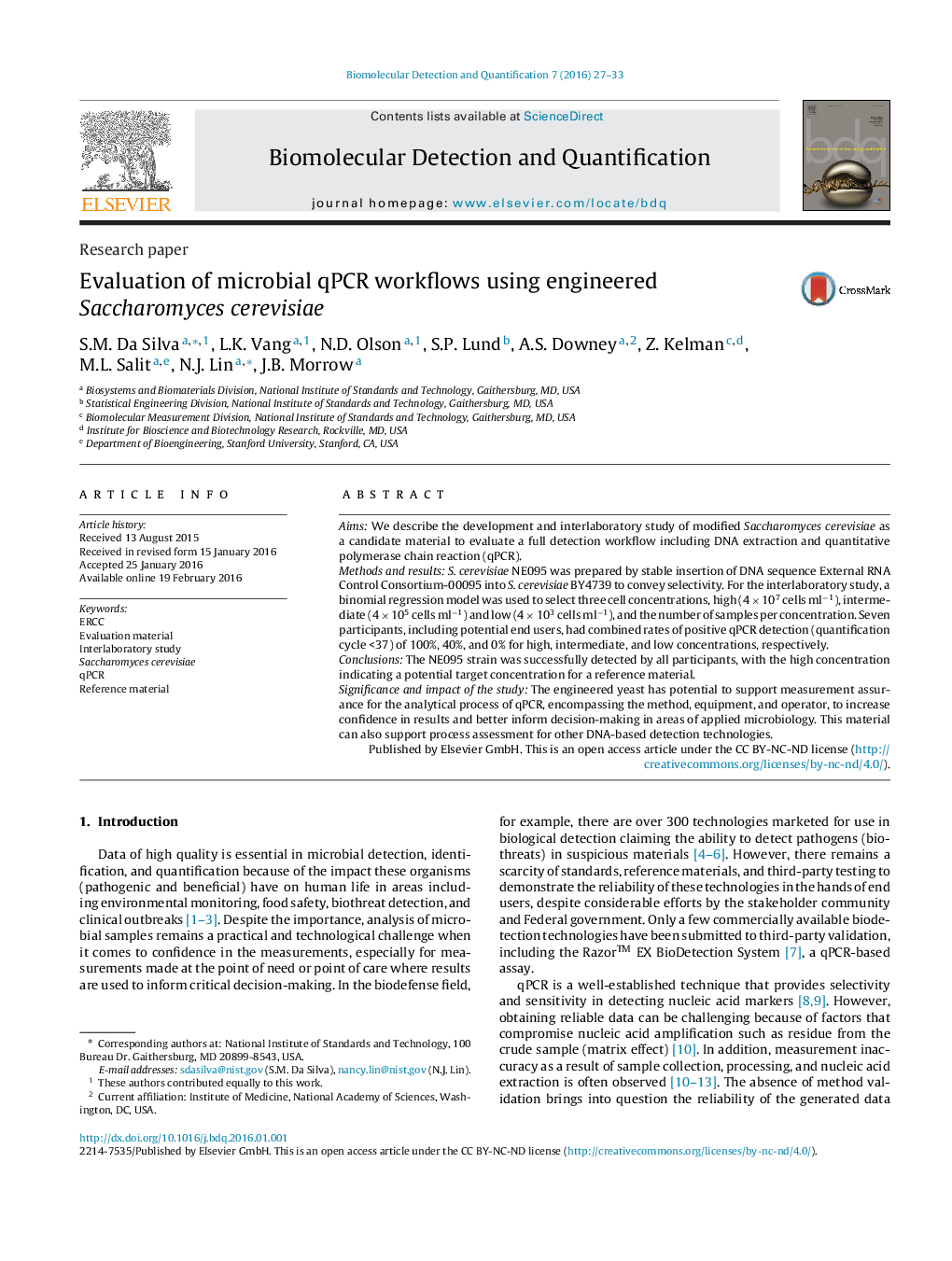| Article ID | Journal | Published Year | Pages | File Type |
|---|---|---|---|---|
| 2034723 | Biomolecular Detection and Quantification | 2016 | 7 Pages |
AimsWe describe the development and interlaboratory study of modified Saccharomyces cerevisiae as a candidate material to evaluate a full detection workflow including DNA extraction and quantitative polymerase chain reaction (qPCR).Methods and resultsS. cerevisiae NE095 was prepared by stable insertion of DNA sequence External RNA Control Consortium-00095 into S. cerevisiae BY4739 to convey selectivity. For the interlaboratory study, a binomial regression model was used to select three cell concentrations, high (4 × 107 cells ml−1), intermediate (4 × 105 cells ml−1) and low (4 × 103 cells ml−1), and the number of samples per concentration. Seven participants, including potential end users, had combined rates of positive qPCR detection (quantification cycle <37) of 100%, 40%, and 0% for high, intermediate, and low concentrations, respectively.ConclusionsThe NE095 strain was successfully detected by all participants, with the high concentration indicating a potential target concentration for a reference material.Significance and impact of the studyThe engineered yeast has potential to support measurement assurance for the analytical process of qPCR, encompassing the method, equipment, and operator, to increase confidence in results and better inform decision-making in areas of applied microbiology. This material can also support process assessment for other DNA-based detection technologies.
